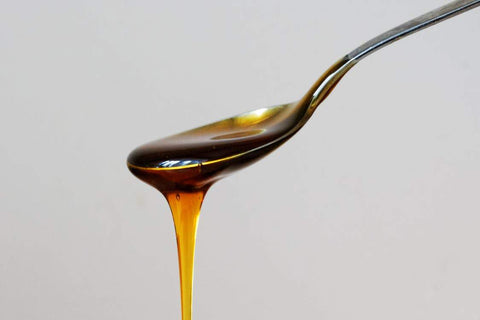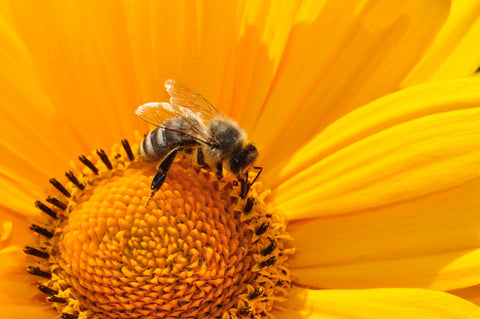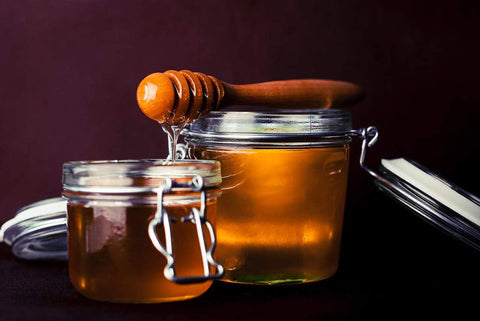Do you love baking but want to cut down on your sugar intake? Why not try replacing the sugar in your baked goods with honey? There are several benefits to eating honey verses eating sugar.
One of these benefits is that honey consists primarily of Fructose and glucose. Glucose is absorbed quickly by the body, giving the body an immediate boost of energy. Meanwhile, the Fructose is absorbed more slowly, providing energy over a longer period. Therefore, because honey contains high levels of both glucose and fructose, it may provide both an immediate and sustained energy.
Honey contains some vitamins, whereas white sugar contains no vitamins at all.
Honey also contains quality protein while sugar on the other hand, gets a miserable zero!
Lastly is that Honey contains a much higher rate of minerals than sugar does including calcium, potassium, manganese, and iron.
So, it would seem that honey is the more nutritious option to granulated sugar but I also just love the earthy sweetness honey imparts on baked goods. And the coolest part about baking with honey is that each varietal lends a different flavor to the end product. Orange blossom adds a citrusy, floral note; wild raspberry is reminiscent of the berry itself; and buckwheat is almost molasses-like.
But when it comes to swapping in honey for sugar in a recipe, it's not simply an even trade. So here are 4 simple rules to swapping sugar out for honey.
- Use Less Honey than you would Sugar.
Rule: For every 1 cup of sugar, substitute 1/2 to 2/3 Cup of honey.
You will want to reduce the amount of overall sweetener you use when switching out sugar for honey. The reason for this is that honey can be twice as sweet at time depending on the type of honey you are using.
You will need to use your own judgement to determine the exact amount to use depending on the honey. Some honey’s like Acacia is extra sweet while on the opposite end of the spectrum you might have something like chestnut that is much less sweet.
- Reduce the amount of other liquids used.
Rule: For every 1 cup of honey you use, subtract 1/4 of other liquids you would normal use in the recipe.
Unlike with Sugar Honey is in a liquid form and is made up of about 20 % Water. For this reason, you will want to reduce the total amount of liquids you are using in the recipe to make up for the extra liquid in honey.
Again, you might need to use your best judgement when first trying out honey in place of sugar in a recipe but generally you will want to reduce by 1/4 to possibly as much as 1/3 of the liquids in your recipe.
- You will want to add Baking Soda.
Rule: Add 1/4 teaspoon baking soda for every cup of honey used.
For this particular rule, you only want to add baking soda in a recipe that does not already call for baking soda. Because Honey is naturally acidic you will need the baking soda to help balance out the acidity so that the baked goods will still rise properly.
- You will need to lower the temperature of the oven.
Rule: Reduce the temperature of the over by 25 Degrees F.
The higher sugar content in honey means it caramelizes and therefore burns faster than granulated sugar. To ensure that whatever you're baking doesn't brown too quickly, lower the heat and keep a watchful eye. You will want to check on it periodically to avoid burning or over-baking.




